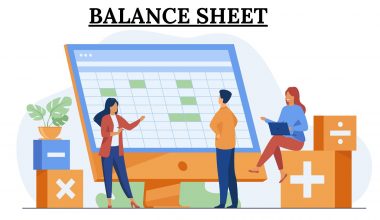An interest rate reduction refinances loan (IRRRL) may be perfect for you if you have an existing VA-backed home loan and wish to lower your monthly mortgage payments or make your payments more consistent. Refinancing allows you to replace your existing loan with a new one with better conditions. Find out if you’re qualified for IRRL, how to apply, benefits, and all you should know.
IRRL
The VA home loan is a valuable military perk that stands out from the rest for a variety of reasons. The main reason is that it is one of the few benefits of joining the US military that offers you access to the program but does not guarantee approval due to the need that all VA home loan applicants must meet financial qualifications in order for the loan to be granted.
However, VA home loans feature lenient credit standards and a set of down payment restrictions that are particularly borrowers-friendly (zero down in most cases unless there are credit problems or other circumstances which may require a down payment).
Aside from the no-money-down option and liberal credit standards, there are other benefits to having a VA mortgage. If you already have a VA loan, you may be eligible for a refinance loan that provides a benefit to the borrower, such as a lower interest rate, a lower monthly payment, or the chance to convert an adjustable-rate mortgage to a fixed-rate loan, among other things.
The VA Interest Rate Reduction Refinance Loan, or VA IRRRL for short, is this alternative. It’s also a VA Streamline Refinance mortgage, and it’s a lot of people pay off their mortgages faster.
Overview
The requirements for an IRRL are quite lax basically, applicants who already have a VA loan are almost guaranteed approval for refinancing. They must, however, apply to a lender certified by the Department of Veterans Affairs (and since the terms of financial institutions vary, the VA encourages borrowers to comparison shop). While there is no limit to how much a homeowner can borrow, lenders will take the VA’s liability limits into account when calculating how much they are willing to refinance. The basic entitlement available to each eligible veteran is $36,000; depending on local county boundaries, lenders will typically extend up to four times that amount.
In addition, the refinanced loan must provide a genuine financial benefit to the borrower: the new mortgage’s interest rate must be lower than the old one’s, or the monthly payments must be lower. Only if the borrower is converting an ARM to a fixed-rate mortgage is there an exception.
Even when compared to other VA loans, the occupancy criterion for an IRRRL is less stringent. Borrowers can use the IRRL program to refinance homes that they formerly but are now as investment properties, rental properties, or second homes. To apply for the loan, the property by the mortgage does not need to be evaluated.
Special Considerations for an Interest Rate Reduction Refinance Loan
An IRRRL, unlike other federal loans, does not require monthly mortgage insurance. These loans do, however, come with funding fees, which vary depending on the loan but are often around 0.5 percent. Borrowers might avoid paying the fees upfront by factoring them into the loan amount or accepting a higher interest rate.
The debt being refinanced must be the property’s original mortgage. If the homeowner has a non-VA loan, they and the lender must agree to make it a subordinated lien (sometimes known as a second mortgage) so that the new IRRL can become the first mortgage. If the borrower defaults, this debt will only be paid once the VA loan’s creditor recoups its losses.
The VA Interest Rate Reduction Refinance Loan: Basic Rules
Only a house purchased with a VA mortgage is eligible for the VA IRRL. VA-to-VA refinances loans are the name for these types of refinance loans. These loans must provide a measurable advantage to the borrower in some way. That could mean cheaper monthly payments, a reduced interest rate, or switching from an adjustable-rate loan to a fixed-rate mortgage.
Certain modifications to the loan (in the form of add-ons such as subsidized closing expenses) may cause the monthly payment to increase. This is anticipated by VA loan laws, and such situations are on a case-by-case basis.
Why Might I Want to Get an IRRL?
Often called a “streamlined” refinance, an IRRRL may help you to:
- Lower your monthly mortgage payment by getting you a lower interest rate, or
- Make your monthly payments more stable by moving from a loan with an adjustable or variable interest rate (an interest rate that changes over time) to one that’s (the same interest rate over the life of the loan)
You can borrow up to the Fannie Mae/Freddie Mac conforming loan maximum on a no-down-payment loan in most areas and even more in some high-cost counties. If you want to make a down payment, you can borrow more than this amount.
Find out how much you may borrow with a VA home loan.
When refinancing a loan, keep closing expenses in mind because they can add up to thousands of dollars. To assess if refinancing is worth it, divide your closing fees by the amount you estimate to save each month by refinancing. While your lender can advise you on the transaction’s costs and benefits, you should be sure you know what you’re getting into.
How do I get an IRRL?
#1. Find a lender
To receive an IRRRL, you’ll need to go via a private bank, mortgage business, or credit union, not us. Terms and fees may differ, so speak with a few lenders to compare your options.
Note: If you have a VA home loan, you should be cautious about refinancing offers. Claims that you can skip payments or achieve an extremely cheap interest rate. As well as other things that sound too good to be true could indicate a deceptive deal.
#2. Give your lender any needed information
Take the Certificate of Eligibility (COE) you used to secure your original VA-backed home loan to your lender to demonstrate how you utilized your entitlement previously. If you don’t have your original COE, ask your lender to obtain one for you via the VA Home Loan Program online.
#3. Follow your lender’s process for closing on the IRRRL loan, and pay your closing costs
It’s possible that you’ll have to pay the VA funding charge. Because the VA home loan program does not need down deposits or monthly mortgage insurance. This one-time fee helps to reduce the loan’s cost for US taxpayers. In addition to the closing expenses, your lender will charge interest on the loan.
Find out about the Veterans Administration funding fee and other closing charges.
You can include these charges in the new loan using an IRRL. So you don’t have to pay them upfront. Alternatively, you may be able to make a new loan with a high enough interest rate that your lender will cover the fees.
Is a VA IRRRL Loan Worth it?
Is it worthwhile to get a VA IRRRL? Some homeowners might find that the investment in a VA IRRRL is worthwhile, while others might not. Refinancing with this kind of loan could be beneficial for you if you are able to acquire a reduced interest rate. This could result in a monthly payment that is easier to handle, as well as a decrease in the total amount of interest that you pay over the course of the loan’s lifetime.
Are there Closing Costs With a VA IRRRL?
By including all fees and expenses in the new loan, it is possible to complete an IRRRL with “no money out of pocket.” It’s possible that some lenders will declare that the VA mandates them to charge certain closing charges and include them in the loan. The only expense that is required by VA is a funding fee* that is equal to 0.2 percent of the total amount of the new loan.
Do Sellers Pay More in Closing Costs for VA Loans?
The VA financing program permits the seller to pay for the buyer’s closing fees up to a maximum of 4% of the sales price of the home. There is no obligation placed on the seller to pay that amount. Before beginning negotiations on a purchase agreement, be sure to inform your real estate agent that you would prefer the seller to contribute toward covering some or all of your closing costs.
Which FICO Score Do Mortgage Lenders Use in 2023?
In the field of mortgage lending, the FICO Score 5 is the one that is applicable the vast majority of the time. When considering mortgage applications, the vast majority of lenders, according to FICO, access the credit histories of applicants from all three of the main credit reporting agencies. There is also the possibility that mortgage lenders will consider a borrower’s FICO Score of 2 or FICO Score of 4 when making their decisions.
IRRL Underwriting & Appraisal
An Interest Rate Reduction Refinance Loan from the VA does not require credit underwriting or an assessment. However, depending on their criteria and each homeowner’s unique situation, some lenders may require both.
In most circumstances, Veterans United wants a 640 FICO score. In addition, we demand current loans with no 30-day late payments in the last 12 months.
We’ll ask for two-year work history. But we won’t need to know about income or assets unless the new mortgage payment would be more than 20% higher than the old one or there are worries about income stability.
In these circumstances, the IRRRL becomes “credit qualifying,” which means we’ll require all relevant income documentation. Such as full Verification of Employment, tax records, and more.
Before the refinance can close, we’ll conduct a verbal Verification of Employment (VVOE). Borrowers who were employed at the time of their previous loan closing must continue to be employed when their new loan closes.
The income can come from:
- The same job or a different one
- Retirement income
- Disability Income
- Self-employment income
The loan will be lowered to credit qualifying if the borrower was employed at the time of closing on their current loan but is now unemployed and receiving no income.
Lenders may have different evaluation guidelines. Some lenders may be able to appraise the home’s value using an Automated Valuation Model (AVM). Additionally, this is a tool that uses mathematical models and publicly available data to estimate the worth of a property. There is no in-person appraisal of the property by a VA appraiser with an AVM.
A pest inspection or a good test is usually not required for streamlined refinances. Talk to a loan professional at Veterans United about your individual situation.
IRRL benefits
- Lower monthly mortgage payment
- Lower interest rate to build equity faster
- More money in your pocket
- Monthly mortgage insurance is not required
- There are no origination fees to pay
- No appraisal or minimum credit score is required
- Move away from more unstable loans such as a loan with an adjustable or variable interest rate to ones that are fixed
- Refinance a secondary or investment property you no longer live in. The previous occupancy is all that’s required for a VA Streamline
What Disqualifies You from a VA Loan?
In order for a veteran to be eligible for benefits and services related to VA home loans, the veteran’s discharge or service must have been under conditions that are not dishonorable (e.g., honorable, under honorable conditions, general). In most cases, a veteran’s character of discharge will not be held against them when it comes to receiving benefits from Veterans’ Group Life Insurance.
What Will Cause VA Loan to Get Disapproved?
Applications for VA home loans are rejected for a variety of reasons, the most prevalent of which is due to inaccuracies on the application itself. Lenders are unable to grant loans until they are certain that the information provided by borrowers on their personal and financial circumstances is accurate. Before you send in your application, be sure that you have thoroughly reviewed all of the statements and statistics that you have entered.
How Much Does Credit Score Affect VA Loans?
A minimum required credit score is not stipulated in the lending rules for loans guaranteed by the Department of Veterans Affairs (VA) of the United States of America. However, in order to qualify for a VA loan, the majority of lenders require a credit score of at least 620, and they have a tendency to provide cheaper interest rates to applicants who have higher scores.
FAQ
Does Irrrl make sense?
Benefit financially.
Lenders will typically only approve a VA IRRRL if it will help you out financially. This could mean a lower rate or monthly payment. Or you could refinance from an adjustable rate to a fixed rate, which may help you budget more effectively and make payments on time.
Are there closing costs with a VA Irrrl?
Closing Costs & Loan-to-Value (LTV)
Unlike with a VA purchase loan, homeowners seeking an IRRRL can finance all of their closing costs, including up to two discount points and the VA Funding Fee. IRRRL borrowers who are not exempt will need to pay the VA Funding Fee.
Is appraisal required for VA Irrrl?
Although VA does not require an appraisal or credit underwriting on IRRRLs, any customary and reasonable credit report or appraisal expense incurred by a lender to satisfy its lending requirements may be charged to the borrower and included in the loan.
Is cash back allowed on a VA Irrrl?
Since the VA does not require a credit check on an IRRRL transaction, it’s logical that VA loan rules also state there’s no cash-back option available to the borrower. Loan proceeds may only be applied to paying off the existing VA loan and to the costs of obtaining or closing the IRRRL.






